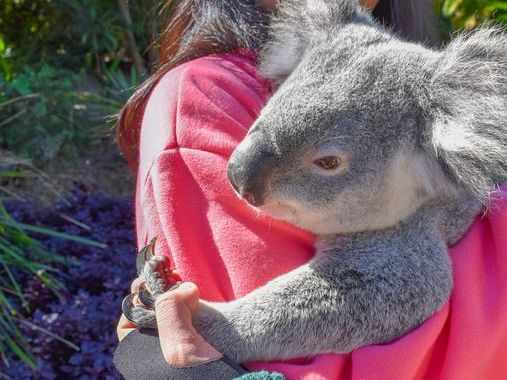Search results
Queensland (locally / ˈ k w iː n z l æ n d / KWEENZ-land, commonly abbreviated as Qld) is a state in northeastern Australia, the second-largest and third-most populous of the Australian states. It is bordered by the Northern Territory , South Australia and New South Wales to the west, southwest and south respectively.
Discover the diverse beauty of Queensland, from the Gold Coast to the Great Barrier Reef, the Daintree Rainforest and more. Find popular destinations, trips and itineraries, events, accommodation and experiences for your Queensland holiday.
Discover Queensland, a state of natural wonders, from the Great Barrier Reef to the outback. Find family-friendly destinations, events, activities and more on the official site for Queensland.
- Overview
- Relief and drainage
- Soils
- Climate
Queensland, state of northeastern Australia, occupying the wettest and most tropical part of the continent. It is bounded to the north and east by the Coral Sea (an embayment of the southwestern Pacific Ocean), to the south by New South Wales, to the southwest by South Australia, and to the west by the Northern Territory. The capital is Brisbane, on the state’s southeastern coast.
Queensland, the second largest of Australia’s states, occupies nearly one-fourth of the continent. The state is more than twice the size of the U.S. state of Texas and seven times larger than the United Kingdom. In terms of land occupancy, however, Queensland is indeed Australia’s largest state, with an occupied area greater than that of the whole of Western Australia. It also is the most decentralized mainland state, with most of its people scattered along the eastern coastline over a distance of 1,400 miles (2,250 km). The rest of the population is dispersed thinly over almost all of the vast interior, posing severe access and communication challenges. With its large area and small population, Queensland’s economy is essentially resource-based, its exports predominantly pastoral, agricultural, and mineral products.
Queensland lies astride two major Australian landform zones: the Eastern Uplands and the Central Sedimentary Lowlands.
Britannica Quiz
Australia, United States, Canada, or Ireland? Quiz
The eastern third of the state is a complex zone of old, eroded highlands, with extensive exposures of granite and mineralized metamorphic rocks, occasionally capped by younger basalt flows, and with broad basins of even more-recent sedimentary rocks. The boldest topography lies close to the seaboard, with summits from 2,000 to 5,000 feet (600 to 1,500 metres). The uplands attract high rainfall, supplying short, steep perennial streams, and are flanked by narrow coastal valleys. Elsewhere east of the mountains are vast sedimentary basins, forming lowlands drained by such major intermittent streams as the Burdekin, Fitzroy, Barron, and Burnett rivers. The coastline presents a variety of landscapes, including bold headlands, sandy beaches, lagoons, estuaries, wetlands, alluvial plains, occasional extensive vegetated dunelands, and a scattering of nearshore islands of great recreational value.
In contrast to the variety of the coastal area is the seeming monotony of the vast inland plains, broken occasionally by low tablelands and ranges and drained by unreliable streams that are prone to extensive flooding. Gentle gradients contribute to wide, braided stream channels, most fully developed in the Channel Country of the far southwest. These plains are underlain by the recent, deep sediments of the Great Artesian Basin, which constitutes a reliable source of water for livestock. To the northwest of the basin are the stumps of ancient mineralized uplands, forming the Mount Isa block.
Students save 67%! Learn more about our special academic rate today.
Most soils are old and infertile, deficient in phosphorus and nitrogen. A lack of organic matter, particularly in arid and semiarid areas, accentuates the problem, and many soils have low capacity to absorb and retain moisture. In coastal areas the most fertile soils are of relatively recent alluvial or volcanic origin, while the gray-brown and bla...
Lying between the low latitudes of 10° and 29° S, Queensland experiences tropical and subtropical climatic conditions. Summer temperatures are high, with average January maxima from 82 °F (28 °C) on the coast to 99 °F (37 °C) in the interior. Winters are mild and sunny, with July maxima from 68 °F (20 °C) in the south to 79 °F (26 °C) in the north. The interior experiences the most prolonged summer heat, while the southern interior and highlands have cooler winters, with a frost period of up to 100 days.
Precipitation and humidity show a persistent decline from the coast to the interior. A narrow coastal zone receives 30 to 60 inches (750 to 1,525 mm) annually, declining to only 5 to 6 inches (125 to 150 mm) in the southwest. Particularly in the northern tropics, the rainfall is concentrated in a wet season extending through summer and early autumn. Southern Queensland receives sufficient winter rain to support winter cropping of wheat. A limited coastal zone in northern Queensland receives copious year-round rainfall from the prevailing southeast winds, with annual totals of up to 180 inches (4,575 mm). Rainfall is highly variable, with extremes of drought and flood and a high risk of damage from tropical cyclones on the more northerly coasts. In late 2010 and early 2011, unusually heavy rains caused several of the state’s major river systems to overrun their banks. The record flooding inundated cities including Rockhampton, Bundaberg, and Emerald, and crops across large areas of Queensland were destroyed.
Learn about Queensland's history, geography, culture, wildlife, and more from this official government website. Discover why Queensland is the second largest state in Australia and home to five World Natural Heritage areas.
Queensland is Australia's take on paradise. Warm, laidback and heartbreakingly beautiful, its sweep of pristine beaches, luxuriant jungle and ethereal peaks conjure a southern Shangri-La.
Discover the diverse and amazing attractions of Queensland, Australia's second biggest state. From the Great Barrier Reef and Fraser Island to the outback and the rainforest, here are 30 unforgettable experiences to plan your trip of a lifetime.
Jump Queues with Skip the Line Tickets. Instant Confirmation & E-Tickets Available. Full Refund if You Cancel at least 24 Hours in Advance. Book Now. Do More with Viator.
getyourguide.com has been visited by 1M+ users in the past month
Your ticket search stops here. Find the best prices for the attractions you want to see. From our free cancellation policy to our mobile ticketing, we make your trip stress-free.
tripadvisor.com has been visited by 1M+ users in the past month
Find the best tours, tickets, trips & more. Compare prices and book online on Tripadvisor. Full refund available up to 24 hours before your tour date. Quick & easy purchase process.
Book Your Hotel in Queensland. Browse Reviews & Photos. Check Out Our Price Guarantee. Great Hotels with Amenities to Keep the Whole Family Busy and You Free to Relax, Finally.






